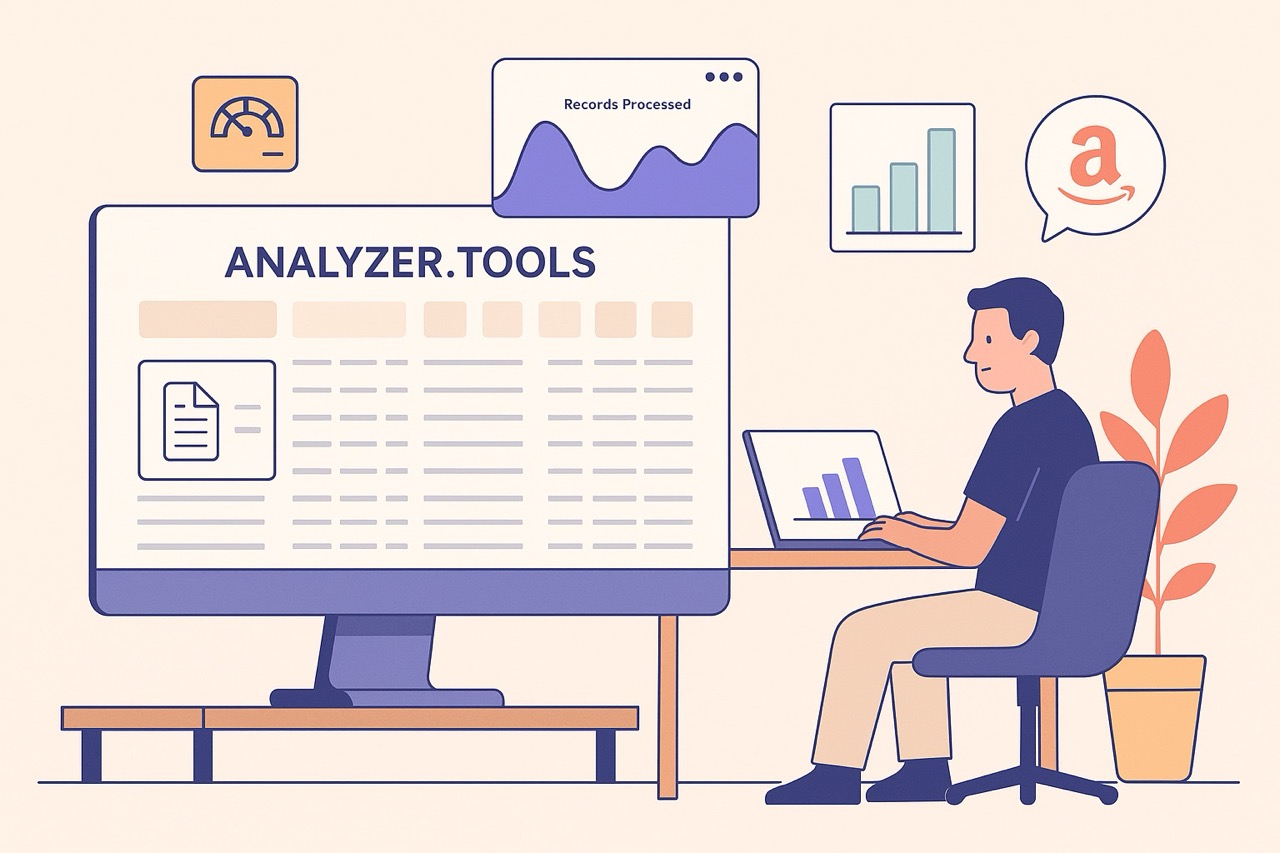
Pro Tip: The best Amazon product ideas often come straight from customer voices. Analyzing reviews helps sellers uncover real pain points and market gaps that raw data alone can miss.
With customer review analysis, sellers gain a direct line to what buyers truly want, uncovering unmet needs and opportunities that data alone might miss. 95% of customers read online reviews before making a purchase, and products with positive reviews are 270% more likely to be purchased (Thrive Agency; KwickMetrics).
By leveraging bulk analysis tools like stg-analyzertools-staging.kinsta.cloud and harnessing real customer feedback, sellers can systematically generate winning product concepts and gain an edge in the crowded Amazon marketplace.
How Customer Reviews Reveal Hidden Product Opportunities on Amazon
Customer reviews are a goldmine for discovering product weaknesses, unmet needs, and fresh opportunities that competitors may have overlooked.
When sellers engage in customer review analysis, they don’t just see what’s working—they spot what’s missing.
79% of consumers are influenced by products with the best ratings and reviews on Amazon. In fact, 72% of customers don’t make a purchase decision without reading a review (eTrend, 2021).
For example, an Amazon kitchenware seller shared on Reddit that after noticing repeated requests for a more ergonomic handle in competing products’ reviews, they designed a new spatula line addressing this pain point—and quickly found their product climbing the rankings.
This demonstrates how Amazon review mining and systematic analysis allow sellers to identify actionable gaps and stand out in saturated categories with smart, customer-driven improvements. Additionally, systematic review analysis can reveal opportunities for more sustainable or higher-quality product improvements based on feedback about durability or environmental concerns.
Step-by-Step: Analyzing Amazon Reviews to Generate Profitable Product Ideas
When it comes to Amazon review mining for product ideation, a repeatable process is key. Here’s how top sellers turn review data into the next profitable launch:
- Gather Reviews Efficiently: Use tools like stg-analyzertools-staging.kinsta.cloud or Amazon Product Opportunity Explorer to collect large sets of reviews for your target niche.
- Apply Sentiment Analysis: AI-powered solutions (such as Amazon Comprehend) can process thousands of reviews in seconds, surfacing the most common complaints, wishes, or positive surprises.
- Spot Recurring Themes: Focus on repeated frustrations or feature requests—these are signals of unmet demand.
- Benchmark Against Competitors: Compare recurring issues in your competitors’ reviews to your own current or planned product, and look for frequent red flags about compliance or restricted brands that may affect your category. This is essential for effective product differentiation.
- Validate with Market Data: Before acting, check sales trends, keyword demand, and seasonality to confirm the opportunity aligns with buyer intent.
Sellers using AI tools for review analysis aim to cut research time and find higher-potential product ideas more consistently. Monitor review sentiment trends over time, not just at a single point, to spot emerging issues or opportunities early.
Avoiding Pitfalls—Fake Reviews, Bias, and Misinterpretation
It’s a question every seller faces: Can you really trust everything you read in Amazon reviews?
The reality is, fake reviews are a significant risk—recent data from a 2023 Which? investigation found that up to 37% of reviews in some categories may be manipulated or fake (Which?, 2023). Tools like Fakespot and ReviewMeta help detect suspicious reviews, including those with repetitive language or that appear in sudden spikes—both common signals of manipulation.
Only 1–3% of Amazon buyers leave reviews, so an unusual surge could warrant closer inspection. This doesn't only distort your product research, but can lead to costly missteps if you build a product around misleading signals.
Sellers can fight back by using these tools and by cross-referencing feedback across multiple listings and marketplaces. Amazon’s own enforcement has removed millions of fake reviews and now leverages AI to catch fraudulent patterns—but diligence is still required.
Always prioritize verified purchase feedback, and focus on consistent patterns rather than one-off comments.
Why Smart Sellers Lean on Customer Reviews
Top Amazon sellers know reviews aren’t just for show—they’re a direct line to what customers really want.
Instead of guessing, they use that feedback to fine-tune products, spot new opportunities, and quickly fix small issues before they become big headaches.
Whether it’s adding a feature people keep asking for or tweaking packaging after a few complaints, the best sellers let real customer voices guide their next moves. Making review analysis a regular part of your process isn’t just smart business, it’s how you keep growing and stand out on Amazon.
Best Practices and Red Flags (Reliable Insights from Amazon Reviews)
To make the most of sentiment analysis and avoid costly mistakes, follow these proven best practices:
- ? Use review aggregation and sentiment tools to process large datasets, but always validate insights with manual checks.
- ? Monitor review trends over time—don’t just analyze one snapshot.
- ?️ Address negative feedback proactively, using it to guide product improvements.
- ? Benchmark against competitors and look for consistent gaps or pain points.
- ? Always avoid any form of incentivized reviews—Amazon strictly prohibits them and removes violators to maintain review authenticity.
Red flags: Sudden review spikes, repetitive language, and a high proportion of unverified purchase reviews may signal manipulation.
Balanced reviews—those that highlight both pros and cons—are consistently rated as more helpful by consumers.
In 2024, a popular FBA seller avoided a major product recall after spotting a sudden surge in five-star reviews linked to a competitor’s newly launched item—using Fakespot to confirm the reviews were fake and ultimately saving thousands by not copying a flawed product concept (FBA Seller Forum, 2024).
Amazon review tools are powerful, but using them wisely—and always with a critical eye—will help you find real opportunities and protect your business.
References
- Digital Commerce 360. (2023). "AI-Driven Product Research: The New Standard for Amazon Sellers." https://www.digitalcommerce360.com/2023/07/15/ai-amazon-product-research/
- Which?. (2023). "Amazon Reviews: How Many Are Fake and What to Look For." https://www.which.co.uk/news/article/amazon-reviews-how-many-are-fake-and-what-to-look-for-aXnTq9v7J8tN